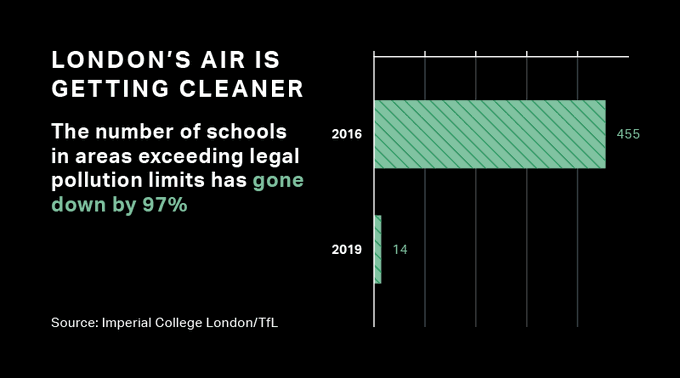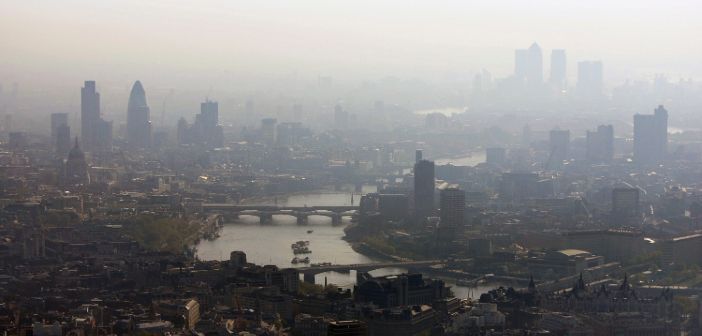New data has shown an improvement in London’s air quality following the introduction of tighter measurements by mayor Sadiq Khan in 2016.
According to City Hall, there has been a 94% reduction in the number of Londoners living in areas exceeding the legal limits of nitrogen dioxide (NO2) and the number of state primary and secondary schools located in areas exceeding legal pollution limits has dropped from 455 in 2016 to 14 in 2019.
The report, which includes new data from the Environmental Research Group, now based at Imperial College London, looked at the two main air pollutants in London, NO2 and particulate matter (PM2.5).
Khan said: “I was elected on a mandate to deliver hard-hitting measures to tackle our toxic air crisis. Today’s report confirms the transformative impact that my policies have had in just four years. I’m pleased that Londoners are breathing cleaner air, that we’re saving the NHS billions of pounds and preventing over a million hospital admissions.”

However, while introduction of London’s Ultra Low Emission Zone (ULEZ) has reportedly led to 44,100 fewer polluting vehicles being driven in the central zone every day and a 12,300-tonne CO2 reduction in the ULEZ, the report also found that a quarter of the UK capital’s roads still exceeded legal NO2 limits. Furthermore, it reported that 99% of London did not meet the World Health Organisation (WHO) recommended limit.
As a result, City Hall said these limits should therefore be included in the Environment Bill as a legally binding target to be met by 2030.
Jane Burston, executive director of the Clean Air Fund, said: “We know that children in London are 4.2% more likely to be hospitalised for asthma on days with high NO2 pollution, so it’s encouraging to see such a dramatic improvement in the number of schools located in areas within legal limits for NO2.
“But there’s still a way to go, with levels of PM2.5 remaining a threat to the health of all Londoners. That’s why it’s so important that the UK government commits to WHO targets in the upcoming Environment Bill – to safeguard our health and to achieve a truly green recovery.”





